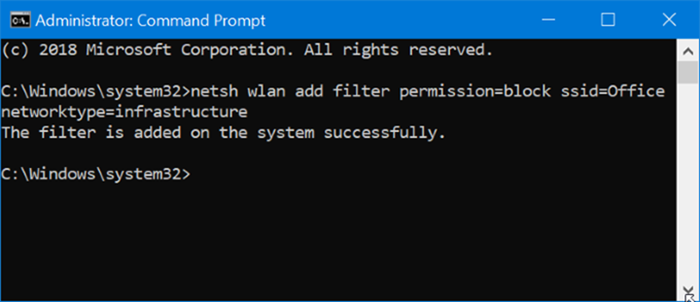

Have the more "upstream" AP (the one that's closer, topologically, to your broadband modem) do NAT and DHCP, and make sure that the wired Ethernet connection to the other AP comes from the first AP's LAN port. If you don't already have another device on your network doing NAT and DHCP, and you need those services, then you can have one of your APs do it.

You generally only want one box on your network acting as a NAT gateway or serving DHCP. If you have another device on the network, such as a broadband home gateway, providing NAT and DHCP service, then put both APs in bridge mode (turn off NAT and DHCP service). This saves your wireless bandwidth for your portable/mobile devices that actually need it, instead of wasting in on stationary devices like APs that could reasonably be cabled up. Since you already have the cabling in place, use wired Ethernet as your backhaul. Many clients assume that these kinds of settings will be the same across all APs with the same SSID. Give both APs the same network name (SSID), the same security type (WPA2-PSK recommended), and the same wireless security passphrase. Roaming works "well enough" on networks both small and large without any IAPP going on. But that's just an optimization, not a prerequisite for roaming. IAPP is a method by which generally enterprise-class APs can communicate with each other over the backhaul to optimize client roaming. Those features are just ways to replace a wired Ethernet backhaul with a wireless one.įor the sake of completeness, I should mention that there is a set of technologies, some proprietary, some standardized in IEEE 802.11F, known generally as Inter-Access Point Protocol. Some other users' Answers and Comments on this question erroneously suggested that wireless protocols or features like wireless relay or WDS might be needed for roaming, but that is absolutely incorrect.

Roaming events are invisible to applications using the network, although some low-level parts of the network stack might be notified of the event, so that, for example, your DHCP client can double-check that this new AP really is connected to the same network, so it can be sure your DHCP lease is still valid on this network. If you have a lot of these buggy clients, then using the same SSID for multiple APs might not work well for you you might want to use different SSIDs so you can more easily monitor and control which AP your client is associated to.*Īssuming both APs are configured similarly and are connected to the same underlying network, roaming is seamless and invisible to the user (except nerds like me who run tools to watch for these things). Sometimes it helps to force the client's Wi-Fi interface to rejoin the network when you notice that a client has stuck to the wrong AP. One roaming caveat: As another commenter pointed out, there are definitely poorly engineered clients out there with poor roaming algorithms or thresholds, which don't actually roam when they should, and thus end up being too "sticky", staying on the first AP they joined well after they could have been getting better performance and reliability with another AP that they are now closer to. If a scan turns up a candidate AP that is enough better than the AP it is currently on, it will automatically roam to the other AP, usually without so much as a missed frame. If the client later thinks it could be better off with another AP on that network, it will do periodic scans of all channels looking for other APs publishing that SSID. as long as its signal strength is above a "good enough" threshold). Once on the network, clients stay with the same AP as long as it is meeting the client's needs (i.e. A client will scan all channels looking for APs publishing the SSID it wants, and will pick whichever one suits its needs best (usually that means whichever one shows the highest signal strength). Wireless clients just assume that all APs with the same SSID are configured similarly and are all just different points of access to the same underlying wired network. There is no magic to making multiple-AP (roaming) 802.11 networks work.


 0 kommentar(er)
0 kommentar(er)
